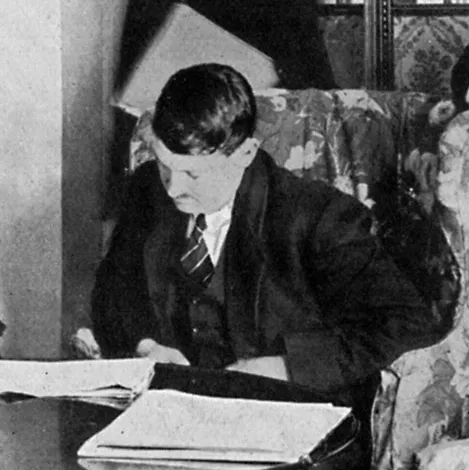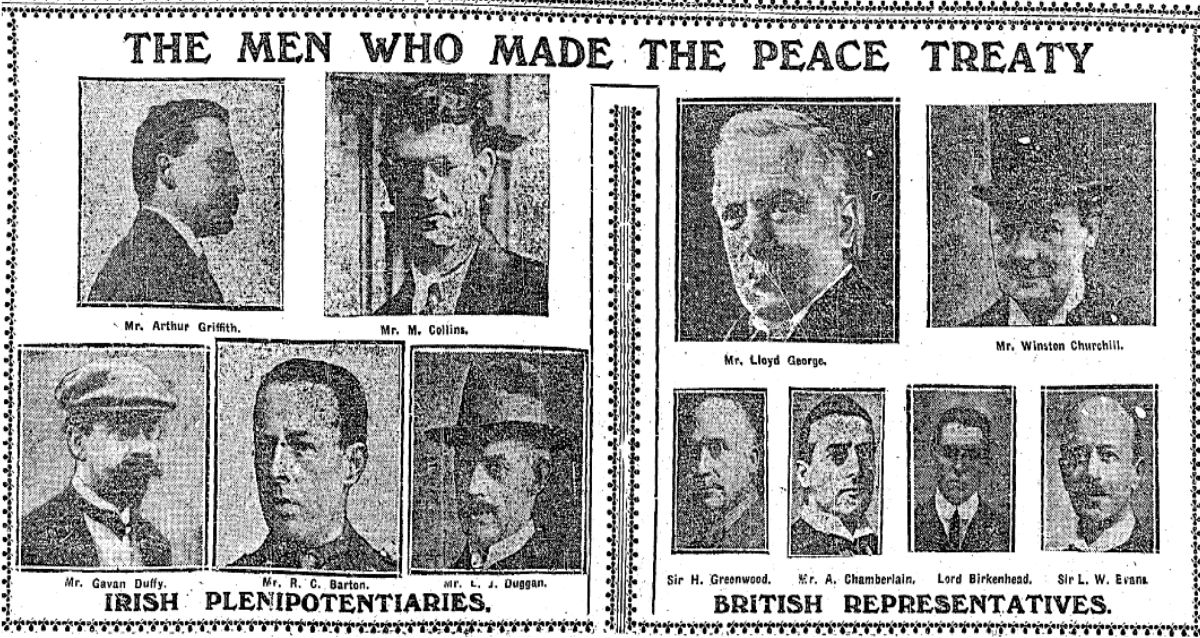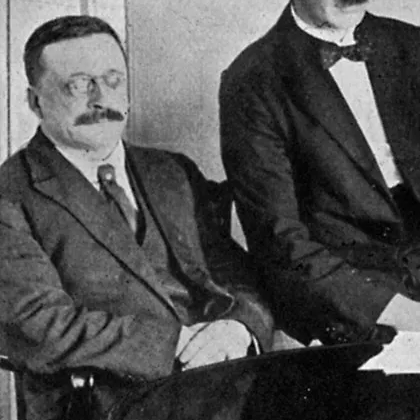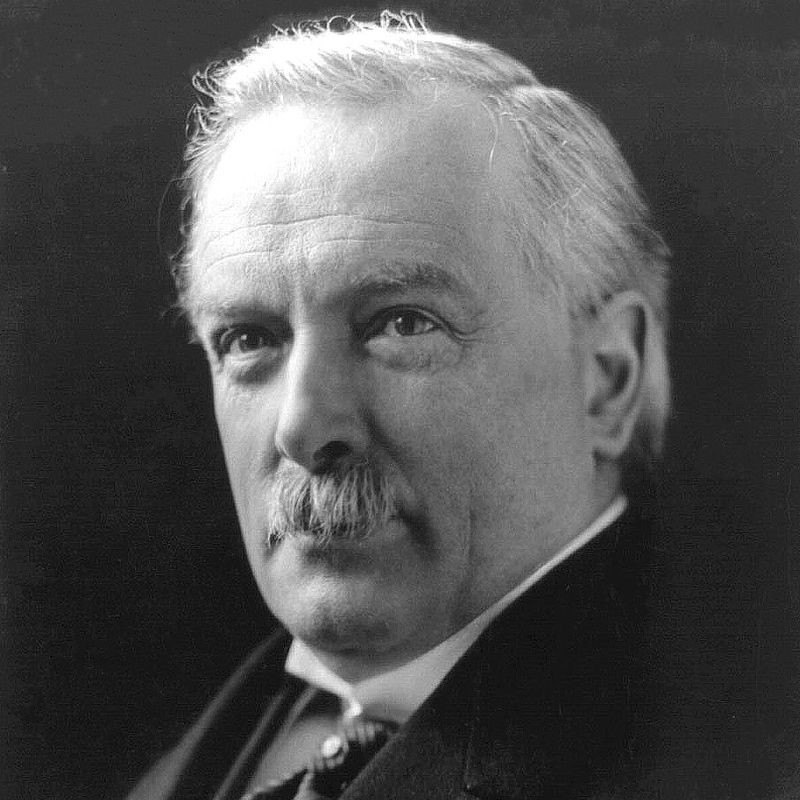
Michael Collins
Lead Negotiator for the Irish Delegation
Collins saw the treaty as a necessary compromise in securing peace and for Irish Independence. He famously refered to the treaty as giving Ireland “the freedom to achieve freedom.”

A Dividing Line in Irish History:
Freedom or Betrayal?

6th December 1922 (re)
The Anglo-Irish Treaty, signed on December 6, 1921, outlined several key provisions that shaped the future of Ireland's governance and its relationship with Britain. It established the Irish Free State and that it "shall have the same Constitutional status in the Community of Nations, known as the British Empire, as the Dominion of Canada,". This was giving the Irish Free State a self-governing dominion akin to Canada, Australia and New Zealand. The treaty also required members of the Free State's parliament to swear an oath of "true faith and allegiance" to the Constitution and that they will "be faithful to H. M. King Georger V."
Another significant provision was the retention of the six northeastern counties, allowing Northern Ireland the option to opt out of the Free State, which it promptly did. The treaty also granted Britain the right to maintain naval bases, termed "treaty ports," at Berehaven, Queenstown (Cobh), and Lough Swilly, ensuring British strategic interests were preserved. Lastly, it specified that the Free State would assume responsibility for a share of the United Kingdom's war debt.
The Irish delegation, led by Michael Collins and Arthur Griffith, sought to secure as much independence as possible while navigating British demands for continued ties to the Crown. British Prime Minister David Lloyd George employed a strategy of deadlines and implied threats of renewed war to pressure the Irish representatives into compromise. The process was fraught with internal tension, as the Irish negotiators were divided over how far they could yield without betraying the ideals of full independence.

Collins saw the treaty as a necessary compromise in securing peace and for Irish Independence. He famously refered to the treaty as giving Ireland “the freedom to achieve freedom.”

Griffith, a founder of Sinn Féin, supported the treaty, arguing that it provided the best possible terms under the circumstances.

Lloyd George applied intense pressure during the discussions, using deadlines and threats of renewed war to ensure the treaty’s acceptance. He played a central role in framing the treaty’s terms, particularly the controversial oath of allegiance.
While the Treaty ended the Irish War of Independence and established the Irish Free State, it quickly revealed deep divisions within Irish society and politics.
The Treaty created two distinct factions:
These divisions quickly led to a bitter civil war, beginning in June 1922.